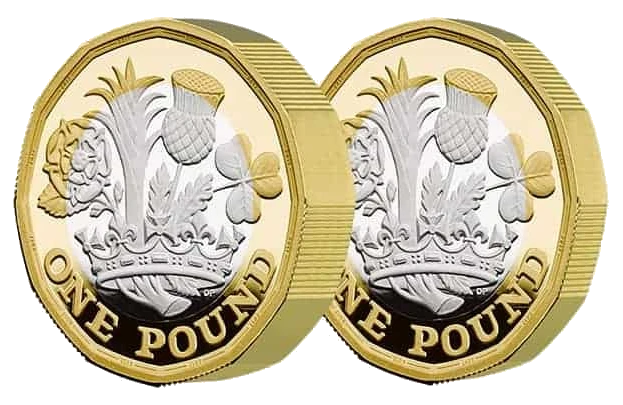The thing about coin collecting is that, when you are starting to get into it, you often come across specialized terminology in catalogs or guides that can be difficult to understand at the beginning of your numismatic journey. So, here in ColeMone, from time to time, we are going to take a look at those basic concepts. Let’s start this series of articles by talking about what a piedfort coin is (sometimes written as “piefort” or “pied fort”, and their history, with some examples sprinkled here and there.
A piedfort coin (sometimes written as “piefort” or “pied fort”) is an exceptionally thick version (usually two times as much) of a regular coin. Originally, they were manufactured as presentation pieces, but nowadays they are targeted to collectors.
History of Piedfort Coins
Piedfort coins have their origin in medieval Europe. The first ones appeared in France in the 12th century, and soon they would pop up in England and, in a lesser quantity, in other Western European realms.
We don’t really know for a fact why they appeared, and there are several hypotheses that try to explain their invention. The three most seriously taken ideas are:
1- They were trial coins intended as presentation pieces for their administrative approval before their mass manufacture.
2- Since coin production wasn’t centralized in just one facility back then as it is today, piedforts were produced in the main mint of a territory in order to be sent to secondary mints, so the chief engravers of those mints knew what the new coin to be produced looked exactly like. We do know that Britain most likely used them in this way.
3- They were an accounting method that allowed mint officials to know how many coins they had manufactured. After surpassing a given milestone, they made a piedfort coin. Therefore, in order to know how many coins they had produced, they only needed to count the number of piedforts.

Nonetheless, all these hypotheses have something in common: the idea that the piedfort’s extra thickness was aimed to make them quickly distinguishable from other coins, so they couldn’t be mixed with regular coins intended for circulation.
Halfway through the 14th century, piedforts began to be used as a present for kings, foreign diplomats and top officials. Given their production method, they were quite scarce, so they became prestige pieces with very high demand. So much so, that, already in 1535, France had to pass a specific law to establish who would and wouldn’t receive one, a right known as the dret de pied fort.
In 1588, England stopped producing piedforts. France would make them for 150 years longer, until the mid-18th century. At that point, they looked like they would become just another numismatic fun fact.

However, at the end of the 19th century, numismatics as a hobby started to gain new devotees, mostly hailing from the middle classes of the richest countries in Europe. The Monnaie de Paris, the French mint, saw a business opportunity in piedforts, so they restarted production in 1890. This time, they were squarely aimed at coin collectors.
The British Royal Mint would do the same one century later, in 1980. During the 1990’s, some other countries, like China, started production as well.
Today, mints around the world sell quite often sell piedfort versions of their coins as collectors items, while the medieval issues are still highly sought-after pieces.
